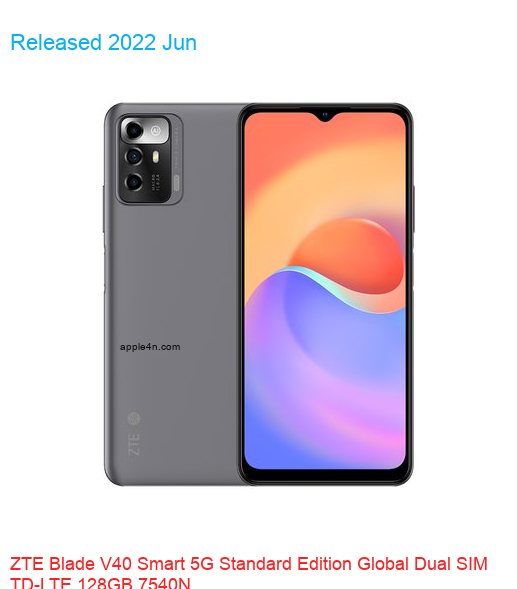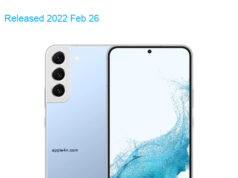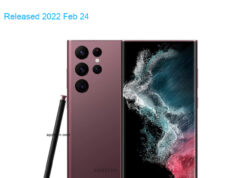| Brand | ZTE |
| Model | Blade V40 Smart 5G Standard Edition Global Dual SIM TD-LTE 128GB 7540N |
| Released | 2022 Jun |
| Announced | 2022 Jun 9 |
| Hardware Designer | ZTE |
| Manufacturer | ZTE |
| Codename | ZTE 7532 |
| General Extras | Haptic touch feedback |
| Device Category | Smartphone |
| Width | 75.5 mm |
| Height | 164.1 mm |
| Depth | 9.2 mm |
| Dimensions | 2.97×6.46×0.36 inches |
| Mass | 181 g |
| Platform | Android |
| Operating System | Google Android 11 (R) |
| Software Extras | Voice Command , Navigation software , Augmented Reality (AR) , Intelligent personal assistant , Face Recognition |
| CPU Clock | 2200 MHz |
| CPU | MediaTek Dimensity 700 MT6833V/ZA, 2020, 64 bit, octa-core, 7 nm, ARM Mali-G57 GPU |
| RAM Type | LPDDR4x SDRAM |
| RAM Capacity (converted) | 4 GiB RAM |
| Non-volatile Memory Interface | Yes |
| Non-volatile Memory Capacity (converted) | 128 GB ROM |
| Display Hole | 1-hole |
| Display Diagonal | 165.6 mm |
| Resolution | 720×1600 |
| Horizontal Full Bezel Width | 7.54 mm |
| Display Area Utilization | 82.8% |
| Pixel Density | 269 PPI |
| Display Type | Color IPS TFT LCD display |
| Number of Display Scales | 16.8M |
| Display Refresh Rate | 90 Hz |
| Scratch Resistant Screen | Yes |
| Graphical Controller | ARM Mali-G57MP2 |
| GPU Clock: | 955 MHz |
| A/V Out | No |
| Microphone(s) | stereo |
| Loudspeaker(s): | mono |
| Audio Output: | 3.5mm |
| Supported Cellular Bands | GSM850 , GSM900 , GSM1800 , GSM1900 , UMTS2100 (B1) , UMTS1900 (B2) , UMTS850 (B5) , UMTS900 (B8) , LTE2100 (B1) , LTE1800 (B3) , LTE850 (B5) , LTE2600 (B7) , LTE900 (B8) , LTE800 (B20) , LTE700 (B28) , TD-LTE2600 (B38) , TD-LTE2300 (B40) , TD-LTE2500 (B41) , NR2100 (N1) , NR1800 (N3) , NR850 (N5) , NR2600 (N7) , NR900 (N8) , NR800 (N20) , NR700 (N28) , TD-NR2600 (N38) , TD-NR2300 (N40) , TD-NR2500 (N41) , TD-NR3700 (N77) , TD-NR3500 (N78) bands |
| Supported Cellular Data Links | GPRS , EDGE , UMTS , HSUPA , HSUPA 5.8 , HSUPA 11.5 , HSDPA , HSPA+ 21.1 , HSPA+ 42.2 , DC-HSDPA 42.2 , LTE , LTE 100/50 , LTE 150/50 , LTE 300/50 , LTE 600/50 , NR 1500 , NR 2600 data links |
| SIM Card Slot | Nano-SIM (4FF) |
| Complementary Phone Services | Voice transmission , Voice speaker , Vibrate , Speakerphone , ANC , HD Voice , VoLTE |
| Dual Cellular Network Operation | Dual standby |
| Sec. Supported Cellular Networks: | GSM850 , GSM900 , GSM1800 , GSM1900 , UMTS2100 (B1) , UMTS1900 (B2) , UMTS850 (B5) , UMTS900 (B8) , LTE2100 (B1) , LTE1800 (B3) , LTE850 (B5) , LTE2600 (B7) , LTE900 (B8) , LTE800 (B20) , LTE700 (B28) , TD-LTE2600 (B38) , TD-LTE2300 (B40) , TD-LTE2500 (B41) , NR2100 (N1) , NR1800 (N3) , NR850 (N5) , NR2600 (N7) , NR900 (N8) , NR800 (N20) , NR700 (N28) , TD-NR2600 (N38) , TD-NR2300 (N40) , TD-NR2500 (N41) , TD-NR3700 (N77) , TD-NR3500 (N78) |
| Sec. Supported Cellular Data Links: | GPRS , EDGE , UMTS , HSUPA , HSUPA 5.8 , HSUPA 11.5 , HSDPA , HSPA+ 21.1 , HSPA+ 42.2 , DC-HSDPA 42.2 , LTE , LTE 100/50 , LTE 150/50 , LTE 300/50 , LTE 600/50 , NR 1500 , NR 2600 |
| Sec. SIM Card Slot | Nano-SIM (4FF) |
| Touchscreen Type | Capacitive multi-touch screen |
| Expansion Interfaces | No |
| USB | USB 2.0 |
| USB Services | USB charging , USB fast charging , USB Host , USB OTG 1.3 , USB OTG 2.0 , USB PD , USB PD 2.0 |
| USB Connector | USB C reversible |
| Bluetooth | Bluetooth 5.1 |
| Wireless LAN | 802.11a , 802.11b , 802.11g , 802.11n , 802.11ac |
| Wireless Services | Wi-Fi Direct , Wi-Fi Tethering , WiDi , Wi-Fi Calling |
| FM Radio Receiver | Unknown |
| Complementary Satellite Services | Simultaneous GPS , A-GPS , Geotagging , QuickGPS , QZSS |
| Supported BeiDou system (BDS) | B1I BeiDou receiver |
| Camera Placement | Rear |
| Camera Image Sensor | BSI CMOS |
| Number of effective pixels | 13.0 MP camera |
| Aperture (W) | f/2.20 |
| Zoom | 1.0 x optical zoom |
| Focus | PD AF |
| Video Recording | 1920×1080 pixel |
| Flash | single LED |
| Camera Extra Functions | HDR photo , Red-eye reduction , Burst mode , Touch focus , Macro mode , Panorama Photo , Face detection , Face tagging , Smile detection , Face retouch |
| Aux. Camera Image Sensor | BSI CMOS |
| Aux. Camera Number of Pixels | 1.9 MP aux. cam |
| Aux. Camera Aperture (W) | f/2.40 |
| Aux. Camera Extra Functions | Burst mode , Macro mode |
| Aux. 2 Camera Image Sensor | CMOS |
| Aux. 2 Camera Number of Pixels | 1.9 MP aux. 2 cam |
| Aux. 2 Camera Aperture (W) | f/2.40 |
| Aux. 3 Camera Image Sensor | No |
| Aux. 4 Camera Image Sensor | No |
| Secondary Camera Placement | Front |
| Secondary Camera Sensor | BSI CMOS |
| Secondary Camera Number of pixels | 4.9 MP sec. cam |
| Secondary Aperture (W) | f/2.00 |
| Secondary Video Recording | 1920×1080 pixel |
| Secondary Camera Extra Functions | HDR photo , Burst mode , Panorama Photo , Face detection , Face tagging , Smile detection , Face retouch , Intelligent scene detection |
| Sec. Aux. Cam. Image Sensor | No |
| Built-in compass | Yes |
| Built-in accelerometer | 3D accelerometer |
| Built-in gyroscope | Yes |
| Additional sensors | FP sensor , L sensor , P sensor |
| Protection from solid materials | Yes |
| Protection from liquids | Yes |
| Battery | Li-ion polymer (LiPo) |
| Nominal Battery Capacity | 4000 mAh battery |
| Market Countries | Egypt , Kenya , Saudi Arabia , South Africa , UAE |
| Market Regions | Africa , Asia , Europe , Middle East |
| Added | 2025-02-08 |
Specifications data description of this 📱ZTE Blade V40 Smart 5G Standard Edition Global Dual SIM TD-LTE 128GB 7540N📱
Title: ZTE Blade V40 Smart 5G Standard Edition Global Dual SIM TD-LTE 128GB – A Comprehensive Specification Overview 📊
Introduction:
ZTE, a leading global provider of mobile communications, has launched its latest smartphone – the ZTE Blade V40 Smart 5G Standard Edition Global Dual SIM TD-LTE 128GB. This post will provide an in-depth look at the specifications of this new device, using easily recognizable emojis to guide you through the information. 🌐NETWORK,LAUNCH📅,BODY🏋️,🌈 DISPLAY,🤖 OS 🛠️,🚀 Chipset 🔧,💪 CPU 🖥️,🎮 GPU 💻,🧠 MEMORY 🗂️,📷 CAMERA 🎥,🔈 SOUND 🎵,📡 COMMS 📶,💡 FEATURES 🎁,🔋 BATTERY🔌 .
Lineup:
The ZTE Blade V40 Smart 5G Standard Edition is part of the company’s Blade series, known for offering high-quality devices at affordable prices. This particular model is designed for global use, supporting TD-LTE bands, and features a generous 128GB of storage.
Design:
The ZTE Blade V40 Smart 5G Standard Edition has a sleek and modern design, with a durable build that ensures long-lasting use. The device’s overall dimensions and weight have not been disclosed.
🌐NETWORK📅:
The device supports 5G networks, providing blazing-fast internet speeds. It is compatible with TD-LTE bands, perfect for global use.
🌈 DISPLAY:
The display specifications remain undisclosed, but we can expect a vibrant and clear viewing experience based on ZTE’s commitment to delivering high-quality displays.
🤖 OS 🛠️:
The ZTE Blade V40 Smart 5G Standard Edition runs on Android, the world’s most popular mobile operating system.
🚀 Chipset 🔧:
Information about the chipset has not been revealed, but ZTE delivers reliable and efficient chipsets, ensuring smooth performance and efficient energy use.
💪 CPU 🖥️:
At this time, CPU details are not provided. However, ZTE smartphones typically feature powerful CPUs capable of handling multitasking and demanding applications.
🎮 GPU 💻:
GPU details have not been shared, but ZTE smartphones are known to offer reliable graphics processing for gaming and other visually demanding tasks.
🧠 MEMORY 🗂️:
The device boasts 128GB of internal storage, providing ample space for apps, photos, and other data.
📷 CAMERA 🎥:
Camera specifications, including the number of lenses, resolution, and features, remain undisclosed. ZTE, however, has a reputation for providing competitive camera systems in their devices.
🔈 SOUND 🎵:
Sound quality and features have not been revealed.
📡 COMMS 📶:
In addition to 5G, the device supports other wireless communication standards, including Wi-Fi, Bluetooth, and GPS.
💡 FEATURES 🎁:
Further details about additional features, such as a fingerprint scanner, face recognition, or water resistance, have not been provided.
🔋 BATTERY🔌 :
Battery capacity and life have not been shared. However, ZTE smartphones typically have good battery stamina, providing users with extended usage periods.
Conclusion:
The ZTE Blade V40 Smart 5G Standard Edition Global Dual SIM TD-LTE 128GB is an exciting new addition to ZTE’s lineup of affordable and high-quality devices. Although some specifications have not been revealed, we can expect solid performance and features based on the company’s track record. Feel free to leave a comment with any questions or your thoughts on ZTE’s latest offering.








